Airport Modular Expansion: Lida Group Erects High Quality Container Terminals Using Rapid Prefab Construction Technology
2025-Jul-30 14:43:29
By Admin
1. Introduction
Air travel has experienced unprecedented growth over the past few decades, with passenger numbers and cargo volumes soaring globally. This surge has put immense pressure on existing airport infrastructure, demanding rapid and efficient expansion to meet the increasing demands. Traditional airport expansion projects are often plagued by lengthy construction timelines, massive disruptions to ongoing operations, and exorbitant costs. As a result, the aviation industry is actively seeking innovative solutions that can address these challenges while ensuring high-quality and sustainable infrastructure development.
Lida Group, a prominent player in the construction industry since 1993, has emerged as a pioneer in providing cutting-edge modular construction solutions. Specializing in the design, production, installation, and marketing of various engineering construction projects, including large-scale labor camps, steel structure buildings, container houses, prefab houses, and integrated buildings, Lida Group has earned a stellar reputation for delivering reliable and high-performance structures. The company holds prestigious international certifications such as ISO 9001, ISO 14001, ISO 45001, and EU CE certification (EN 1090), along with professional construction qualifications, ensuring adherence to the highest industry standards. With a global presence encompassing seven subsidiaries and numerous overseas branch offices, Lida Group is well-equipped to cater to the diverse needs of the aviation sector, particularly in the realm of airport modular expansion through its high-quality container terminals built using rapid prefab construction technology.
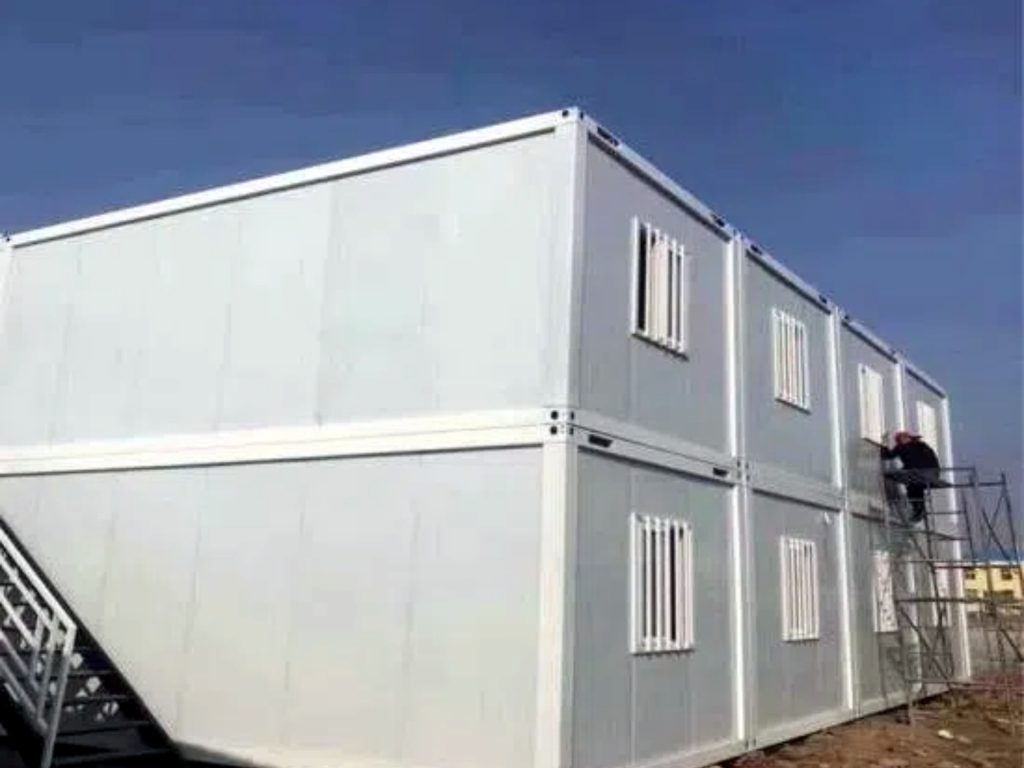
2. The Need for Airport Expansion: Challenges and Pressures
2.1 Growing Passenger and Cargo Demands
The steady rise in global air travel is driven by factors such as increasing disposable incomes, globalization of business, and the expansion of tourism. Major airports around the world are witnessing record-breaking passenger numbers, leading to overcrowded terminals, long queues at check-in counters and security checkpoints, and strained passenger amenities. For instance, some of the busiest airports in Asia, Europe, and North America handle tens of millions of passengers annually, and this number is projected to grow exponentially in the coming years.
Similarly, the growth of e-commerce and international trade has fueled a surge in air cargo volumes. Airports are struggling to keep up with the demand for cargo handling facilities, including storage areas, sorting centers, and loading/unloading docks. The inability to expand cargo infrastructure quickly can result in delays in the delivery of goods, increased logistics costs, and a loss of competitiveness for both the airport and the region it serves.
2.2 Limitations of Traditional Expansion Methods
Traditional airport expansion projects typically involve large-scale on-site construction, which comes with a host of limitations. One of the most significant issues is the long construction period. From planning and design to actual construction and commissioning, these projects can take several years to complete. During this time, airport operations are severely disrupted, causing inconvenience to passengers, airlines, and other stakeholders. Construction activities can lead to noise pollution, dust, and traffic congestion around the airport, further exacerbating the problem.
Moreover, traditional construction methods are often costly. The need for large amounts of raw materials, extensive labor on-site, and the management of complex supply chains all contribute to high project costs. Additionally, unforeseen challenges such as adverse weather conditions, design changes, and regulatory hurdles can further increase expenses and delay project timelines. The inflexibility of traditional structures is another drawback. Once built, it is difficult and expensive to modify or expand them further to accommodate future changes in demand.
2.3 Environmental and Regulatory Constraints
Airports are often located in environmentally sensitive areas or near residential communities, making expansion projects subject to strict environmental regulations. Traditional construction methods can have a significant impact on the local ecosystem, including deforestation, soil erosion, and pollution of air and water. Meeting these environmental requirements adds another layer of complexity and cost to the expansion process.
Regulatory approvals for airport expansion are also time-consuming and stringent. Airports must comply with a wide range of local, national, and international regulations related to safety, security, noise, and environmental protection. Navigating through these regulatory frameworks can delay project initiation and increase administrative costs.

3. Modular Construction: A Solution for Airport Expansion
3.1 Understanding Modular and Prefab Construction
Modular construction involves the fabrication of building components, or modules, in a controlled factory environment. These modules are then transported to the construction site and assembled into a complete structure. Prefab construction, a subset of modular construction, refers to the pre-manufacturing of various building elements, such as walls, floors, and roofs, which are then assembled on-site.
The key advantages of modular and prefab construction lie in their efficiency, quality control, and reduced on-site disruption. Factory-based production allows for precise manufacturing, standardized processes, and the use of advanced technologies, ensuring consistent quality across all modules. This approach also minimizes waste, as materials are used more efficiently in a controlled environment. Furthermore, the off-site production of modules enables parallel processing of design, manufacturing, and on-site preparation, significantly reducing the overall construction time compared to traditional methods.
3.2 Benefits of Container-Based Modular Terminals
Container-based modular terminals, such as those developed by Lida Group, offer unique advantages for airport expansion. Shipping containers, which form the basis of these terminals, are durable, robust, and readily available. They are designed to withstand harsh weather conditions, heavy loads, and long-distance transportation, making them ideal for use in airport environments.
The modular nature of container terminals allows for easy scalability. Additional containers can be added or removed as needed to accommodate changes in passenger or cargo volumes. This flexibility ensures that airports can adapt quickly to evolving demands without undertaking major reconstruction projects. Container terminals are also highly mobile, although in the context of airports, their mobility is more about the ease of reconfiguration and relocation within the airport premises if required.
Moreover, container-based terminals can be customized to meet specific airport requirements. They can be designed to house various facilities, including check-in counters, baggage handling areas, retail outlets, passenger lounges, and cargo storage spaces. The interior of the containers can be finished to high standards, providing a comfortable and functional environment for passengers and staff.
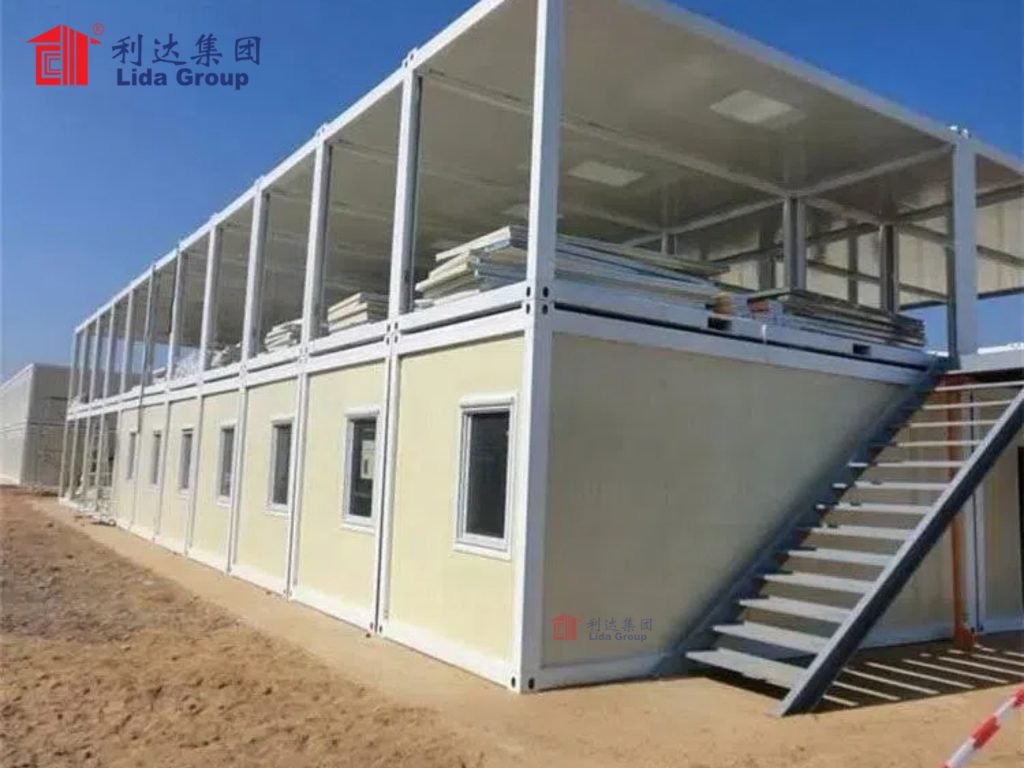
4. Lida Group’s Rapid Prefab Construction Technology for Airport Terminals
4.1 Factory-Based Manufacturing Process
Lida Group’s rapid prefab construction technology for airport container terminals begins with a sophisticated factory-based manufacturing process. The company’s state-of-the-art factories are equipped with advanced machinery and production lines that enable the mass production of high-quality container modules. The manufacturing process is highly automated, ensuring precision and consistency in every component.
First, the design of the container modules is finalized using computer-aided design (CAD) software, taking into account the specific requirements of the airport project, such as the desired layout, facilities, and aesthetic considerations. Once the design is approved, the production of the steel frames, which form the structural backbone of the containers, begins. High-quality steel is used to ensure the strength and durability of the modules.
Next, the walls, floors, and roofs of the containers are fabricated. These components are often insulated to provide thermal comfort and energy efficiency, which is crucial for maintaining a comfortable environment inside the terminals, especially in extreme weather conditions. The interior and exterior finishes are then applied, including painting, flooring, and the installation of windows, doors, and other fixtures.
The final stage of factory production involves the integration of various systems, such as electrical, plumbing, heating, ventilation, and air conditioning (HVAC), as well as communication and security systems. This pre-integration ensures that the modules are fully functional when they arrive at the construction site, minimizing on-site work and reducing the risk of delays.
4.2 Advanced Assembly Techniques
Once the container modules are manufactured, they are transported to the airport construction site using trucks, trains, or ships, depending on the location. Lida Group employs advanced assembly techniques to ensure the quick and efficient installation of the terminals.
The assembly process is guided by detailed plans and specifications, which are developed during the design phase. The modules are positioned using cranes and other lifting equipment, and then connected to each other using specialized connectors that ensure a secure and stable fit. The connections are designed to withstand the forces exerted by wind, seismic activity, and other environmental factors, ensuring the structural integrity of the terminal.
The integration of the various systems within the modules is also completed during the assembly phase. Electrical and plumbing connections between modules are made, and the HVAC systems are tested to ensure they function properly as a single unit. This seamless integration is made possible by the standardized design and manufacturing processes used by Lida Group, which ensure compatibility between all modules.
4.3 Quality Control and Safety Measures
Lida Group places a strong emphasis on quality control and safety throughout the entire construction process. In the factory, each container module undergoes rigorous quality checks at every stage of production. This includes inspections of the steel frames for structural integrity, testing of the insulation materials for thermal performance, and verification of the electrical and plumbing systems for functionality and safety.
On-site, during the assembly phase, quality control teams monitor the installation process to ensure that the modules are connected correctly and that all systems are working as intended. The company also conducts comprehensive safety checks to identify and address any potential hazards, such as unstable connections, electrical faults, or fire risks.
Lida Group’s container terminals comply with all relevant international safety and building codes, ensuring that they meet the highest standards of safety for passengers, staff, and aircraft operations. The terminals are designed to withstand extreme weather conditions, such as strong winds, heavy rain, and snow, and are equipped with fire suppression systems, emergency lighting, and evacuation routes to ensure the safety of occupants in case of an emergency.
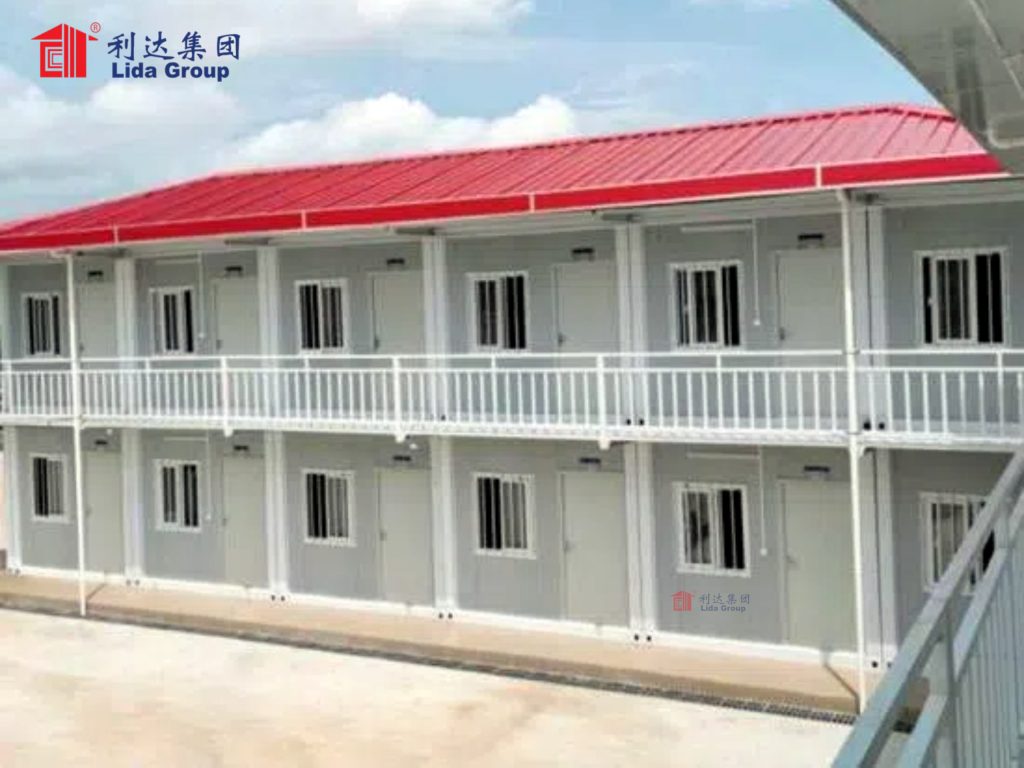
5. Design and Features of Lida Group’s Container Terminals
5.1 Structural Design for Durability and Functionality
The structural design of Lida Group’s container terminals is focused on ensuring durability and functionality in the demanding airport environment. The steel frames of the containers are engineered to provide maximum strength and stability, withstanding the weight of equipment, passengers, and cargo. The modules are designed to be resistant to corrosion, which is essential for long-term use in outdoor environments, especially in coastal airports where saltwater can accelerate rusting.
The layout of the container terminals is carefully planned to optimize the flow of passengers and cargo. For passenger terminals, this includes efficient queuing systems at check-in counters, clear signage, and easy access to security checkpoints, boarding gates, and other amenities. Cargo terminals are designed to facilitate the smooth handling of goods, with dedicated areas for loading and unloading, sorting, and storage.
The containers can be stacked vertically to save space, which is particularly important in busy airports where land is scarce. Stacking is made possible by the strong structural design of the modules and the use of specialized stacking connectors that distribute the weight evenly.
5.2 Integration of Essential Airport Systems
Lida Group’s container terminals are fully integrated with essential airport systems to ensure seamless operations. The electrical systems are connected to the airport’s main power grid, with backup generators installed to provide power in case of a blackout. The HVAC systems are designed to maintain a comfortable temperature and air quality inside the terminals, with controls that can be adjusted based on occupancy and external weather conditions.
Communication systems, such as public address systems, CCTV cameras, and Wi-Fi, are integrated into the container terminals to keep passengers informed and ensure security. Baggage handling systems can also be connected to the terminals, with conveyor belts and other equipment installed to transport luggage between the check-in counters and the aircraft.
For cargo terminals, specialized systems such as weighing scales, cargo scanners, and automated storage and retrieval systems are integrated to streamline the handling and processing of goods. These systems are designed to work in conjunction with the airport’s overall cargo management software, ensuring efficient tracking and tracing of shipments.
5.3 Aesthetic and Comfort Considerations
While functionality and durability are paramount, Lida Group also pays attention to the aesthetic and comfort aspects of its container terminals. The exterior of the containers can be customized to match the architectural style of the existing airport buildings, using paints, cladding, or other materials to create a cohesive look. This helps to integrate the new terminals seamlessly into the airport environment.
The interior of the terminals is designed to provide a comfortable experience for passengers. This includes the use of high-quality flooring, comfortable seating, and adequate lighting. Retail outlets, food and beverage concessions, and restroom facilities can be incorporated into the container terminals to meet the needs of passengers.
In passenger lounges, additional amenities such as charging stations, work desks, and entertainment systems can be provided to enhance the passenger experience. The terminals are also designed to be accessible to people with disabilities, with ramps, elevators, and accessible restrooms installed where necessary.
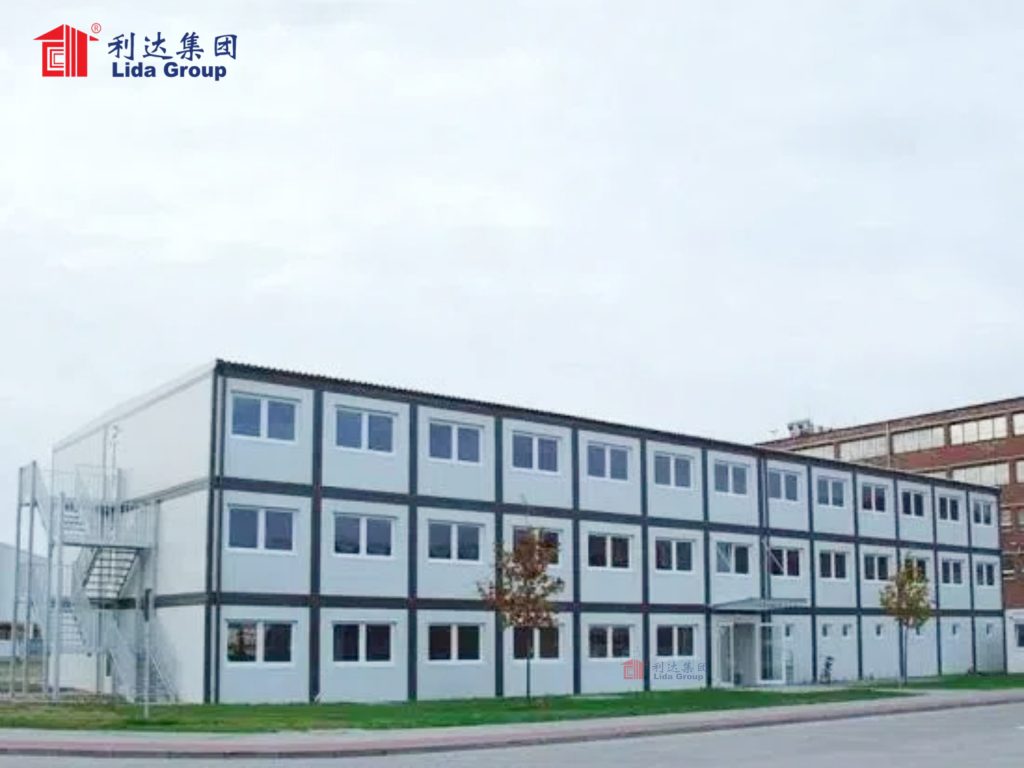
6. Case Studies: Lida Group’s Container Terminals in Airport Expansion Projects
6.1 Passenger Terminal Expansion at a Regional Airport
A regional airport in a fast-growing tourist destination was facing significant passenger congestion due to a surge in visitor numbers. The airport needed to expand its passenger terminal quickly to accommodate the increased traffic without disrupting ongoing operations.
Lida Group was contracted to design and construct a modular passenger terminal using container modules. The project involved the fabrication of 50 container modules in Lida Group’s factory, which were then transported to the airport site. The modules were assembled into a terminal that included 10 check-in counters, a security checkpoint, a boarding gate, and a small retail area.
The entire construction process, from design to commissioning, was completed in just three months, which was a fraction of the time it would have taken using traditional construction methods. The new terminal seamlessly integrated with the existing airport infrastructure, and its modular design allowed for easy expansion in the future. Passengers and airlines praised the new terminal for its modern facilities, efficient layout, and comfortable environment.
6.2 Cargo Terminal Expansion at an International Hub
An international airport that serves as a major cargo hub was struggling to keep up with the growing demand for cargo handling services. The airport needed to expand its cargo terminal to increase storage capacity and improve processing efficiency.
Lida Group designed and built a modular cargo terminal consisting of 30 container modules. The terminal included a sorting area, a storage facility with racking systems, and offices for cargo handlers and customs officials. The container modules were equipped with specialized cargo handling equipment, such as conveyor belts and forklift charging stations.
The construction of the cargo terminal was completed in four months, allowing the airport to quickly increase its cargo handling capacity. The modular design of the terminal enabled the airport to easily adjust the layout as needed, and the integration with the existing cargo management systems ensured a smooth transition. The new terminal significantly reduced cargo processing times and improved the overall efficiency of the airport’s cargo operations.
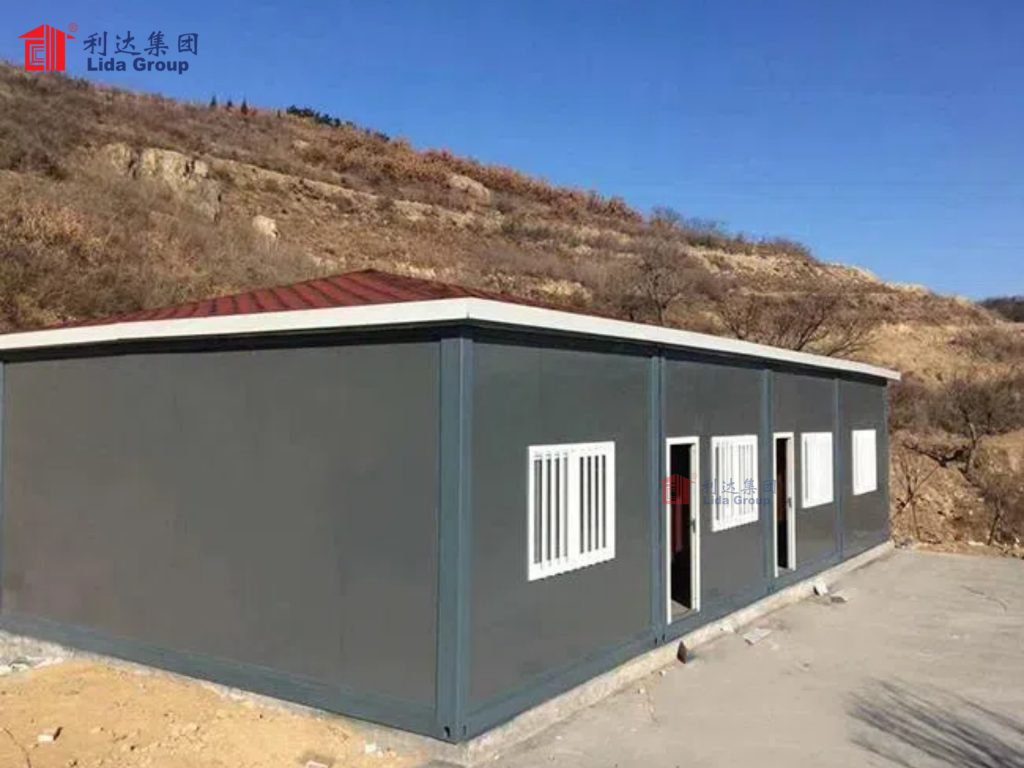
7. Advantages of Lida Group’s Container Terminals for Airports
7.1 Reduced Construction Time and Disruption
One of the most significant advantages of Lida Group’s container terminals is the reduced construction time. By manufacturing the modules in a factory and assembling them on-site, the overall construction period can be shortened by up to 50-70% compared to traditional construction methods. This means that airports can expand their infrastructure quickly to meet growing demands, minimizing the time during which operations are disrupted.
The off-site manufacturing of modules also reduces on-site construction activities, which helps to minimize noise, dust, and traffic congestion around the airport. This is particularly important for airports that operate 24/7, as it allows them to continue normal operations while the expansion work is carried out.
7.2 Cost-Effectiveness
Lida Group’s container terminals offer significant cost savings compared to traditional airport expansion projects. The factory-based manufacturing process enables mass production, which reduces the cost of materials and labor. The standardized design and assembly techniques also minimize the risk of errors and rework, which can add to project costs.
The reduced construction time also leads to cost savings, as it lowers the amount of time spent on site management, supervision, and temporary facilities. Additionally, the modular nature of the terminals allows for phased expansion, meaning that airports can invest in infrastructure as needed, rather than making a large upfront investment.
7.3 Flexibility and Scalability
The flexibility and scalability of Lida Group’s container terminals are key advantages for airports. As passenger and cargo demands fluctuate, airports can easily add or remove container modules to adjust the capacity of their terminals. This flexibility ensures that airports can respond quickly to changing market conditions without incurring significant costs.
The modular design also allows for easy reconfiguration of the terminals. For example, a passenger terminal can be converted into a cargo terminal if the airport’s needs change, or the layout of the terminal can be modified to improve passenger flow. This adaptability ensures that the airport infrastructure remains relevant and useful for many years to come.
7.4 Environmental Sustainability
Lida Group’s container terminals are designed with environmental sustainability in mind. The use of recycled shipping containers reduces the demand for new materials, minimizing the environmental impact of construction. The factory-based manufacturing process also generates less waste compared to traditional on-site construction, as materials are used more efficiently.
The terminals are equipped with energy-efficient systems, such as LED lighting, high-efficiency HVAC units, and solar panels, which reduce energy consumption and lower carbon emissions. The insulation used in the containers helps to minimize heat loss, further improving energy efficiency.
In addition, the modular nature of the terminals allows for easy disassembly and reuse of the modules at the end of their lifespan. This reduces the amount of construction waste sent to landfills and promotes a circular economy in the construction industry.
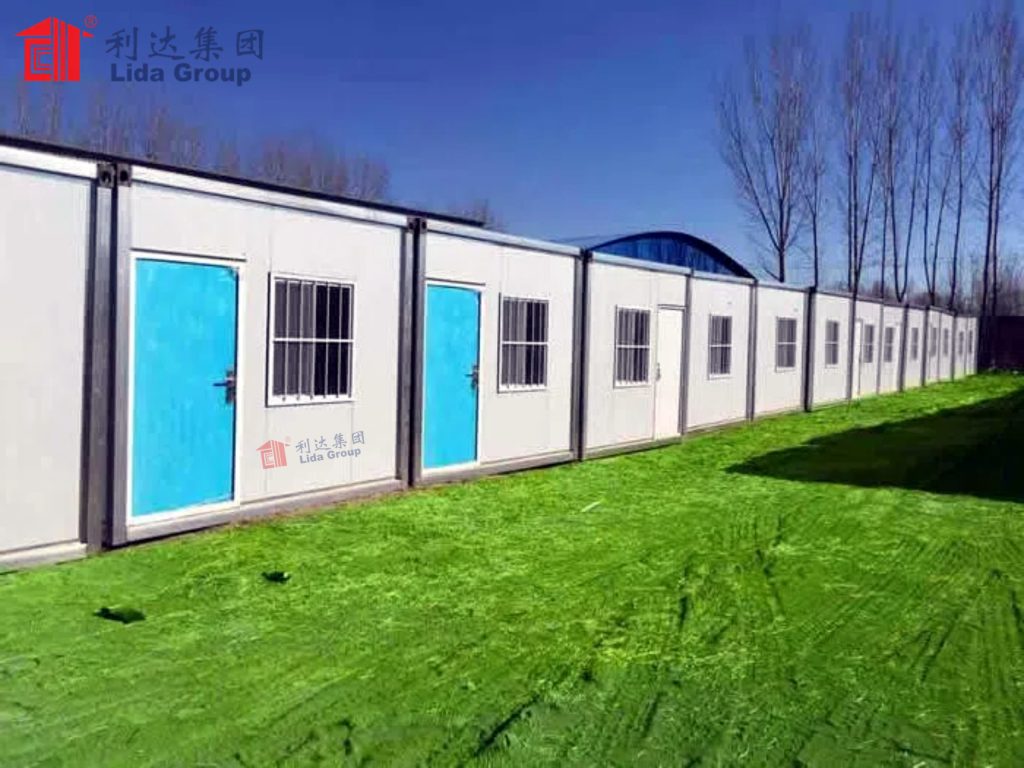
8. Comparison with Traditional Airport Terminals
8.1 Construction Time and Disruption
Traditional airport terminals typically take several years to construct, with long periods of on-site construction that cause significant disruption to airport operations. Passengers and airlines have to deal with noise, dust, and traffic congestion, and flight schedules may be disrupted due to construction activities.
In contrast, Lida Group’s container terminals can be constructed in a matter of months, with minimal on-site disruption. The off-site manufacturing of modules means that most of the construction work is done away from the airport, and the on-site assembly is quick and efficient. This allows airports to expand their infrastructure without significantly impacting their day-to-day operations.
8.2 Cost
Traditional airport terminals are expensive to build, with high costs associated with materials, labor, and on-site construction management. The complexity of the design and the need to comply with strict regulations further increase the cost.
Lida Group’s container terminals are more cost-effective, with savings of up to 30-50% compared to traditional terminals. The mass production of modules in a factory reduces material and labor costs, and the reduced construction time lowers the overall project costs. The modular design also allows for phased investment, which can help airports manage their budgets more effectively.
8.3 Flexibility and Adaptability
Traditional airport terminals are inherently rigid in design. Once constructed, their layout and functionality are difficult to alter without extensive and costly renovations. If an airport experiences a sudden shift in passenger demographics or cargo trends, adapting a traditional terminal to meet new needs can take years and disrupt operations. For example, converting a section of a traditional passenger terminal into a dedicated cargo handling area would require major structural changes, rerouting of utilities, and significant downtime.
Lida Group’s container terminals, however, excel in flexibility and adaptability. The modular design allows for quick reconfiguration of spaces. If an airport needs to expand a retail area in a passenger terminal, additional container modules can be added within weeks. Conversely, if cargo volumes decrease, some modules in a cargo terminal can be repurposed for other uses or temporarily removed. This ability to evolve with changing demands ensures that the airport’s infrastructure remains efficient and relevant, without the need for large-scale reconstruction.
8.4 Environmental Impact
Traditional airport terminal construction leaves a substantial environmental footprint. The extraction of raw materials, such as concrete and steel, consumes vast amounts of energy and contributes to greenhouse gas emissions. On-site construction generates significant waste, including excess materials, debris, and packaging, much of which ends up in landfills. Additionally, the transportation of materials to the site and the operation of heavy machinery further increase carbon emissions.
In contrast, Lida Group’s container terminals prioritize environmental sustainability. By repurposing shipping containers, the demand for new raw materials is reduced, lowering the environmental impact of production. The factory-based manufacturing process minimizes waste through precise material usage and recycling programs. On-site assembly requires fewer heavy machinery operations, reducing noise pollution and carbon emissions. Furthermore, the energy-efficient features of the terminals, such as solar panels and insulation, lower long-term energy consumption, making them a more eco-friendly choice for airports committed to reducing their carbon footprint.
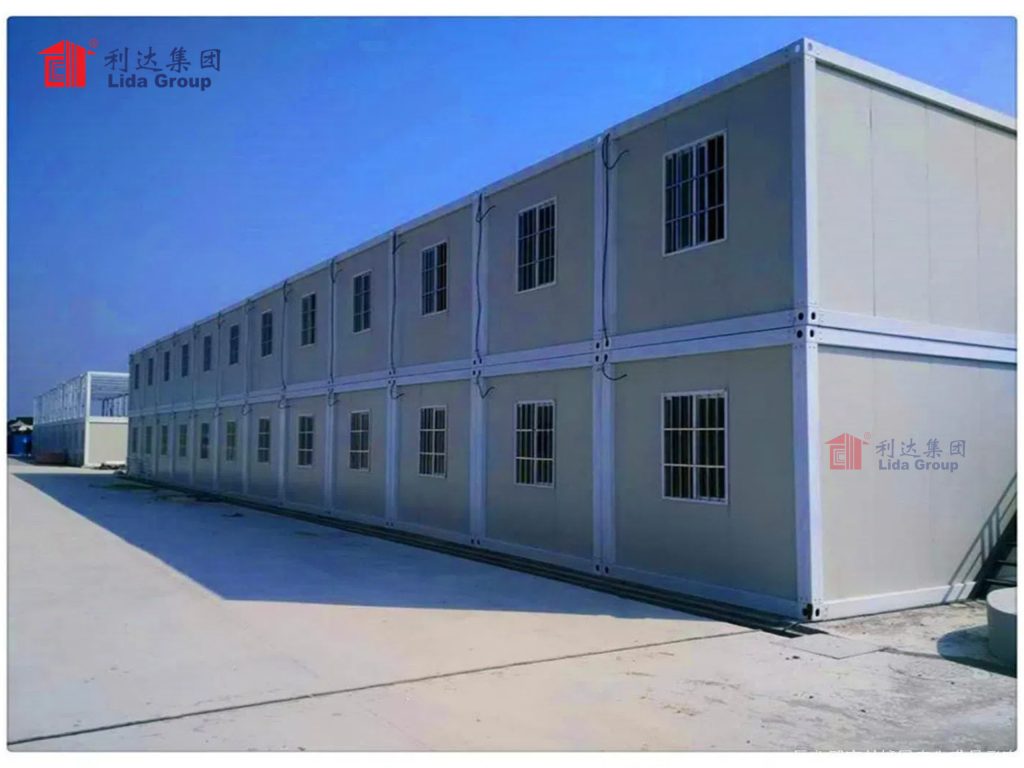
9. Future Trends in Airport Modular Expansion
9.1 Integration of Smart Technologies
The future of airport modular expansion will see increased integration of smart technologies into container terminals. Lida Group is already exploring the incorporation of Internet of Things (IoT) sensors to monitor terminal performance, including energy usage, temperature, and occupancy levels. These sensors can provide real-time data, allowing airports to optimize operations, reduce energy waste, and enhance passenger comfort.
Smart security systems, such as facial recognition and automated baggage screening, will also be integrated into container terminals to improve security and streamline passenger flow. Additionally, digital signage and mobile apps connected to the terminal’s systems can provide passengers with up-to-date information on flight status, gate changes, and amenities, enhancing the overall travel experience.
9.2 Expansion into New Airport Facilities
Beyond passenger and cargo terminals, Lida Group’s modular container technology has the potential to be applied to other airport facilities. This includes temporary or permanent air traffic control towers, maintenance facilities for aircraft, crew rest areas, and even on-site hotels for transit passengers. The modular design allows these facilities to be quickly deployed and customized to meet specific operational needs.
For example, a remote airport with limited infrastructure could use container modules to establish a basic air traffic control tower, ensuring safe operations without the need for a costly traditional structure. Similarly, during peak travel seasons, airports could quickly set up additional crew rest areas using container modules to accommodate the increased number of flight crew.
9.3 Sustainable Innovations
Sustainability will remain a key focus in future developments. Lida Group is researching new materials and technologies to further reduce the environmental impact of its container terminals. This includes the use of biodegradable or recyclable materials for interior finishes, advanced battery storage systems to complement solar panels, and green roofing solutions to improve insulation and reduce stormwater runoff.
The company is also exploring the concept of circular economy in modular construction, where container modules are designed to be easily disassembled and their components reused or recycled at the end of their lifespan. This approach would minimize waste and further reduce the carbon footprint of airport expansion projects.
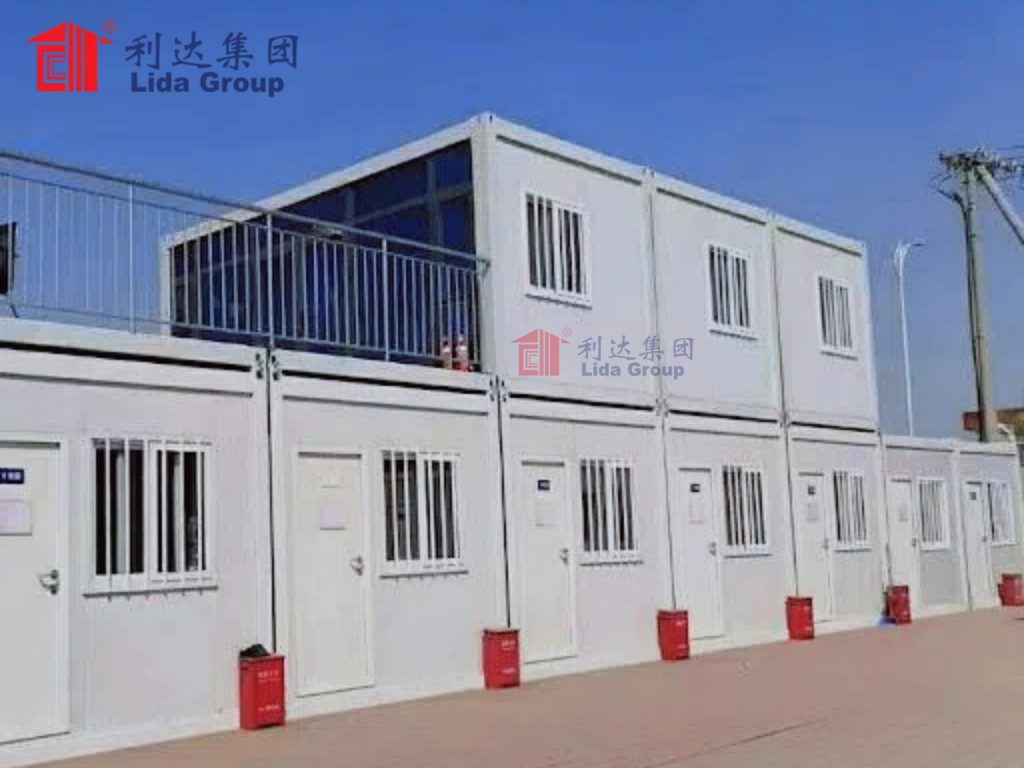
10. Conclusion
The aviation industry’s need for rapid, efficient, and sustainable airport expansion has never been more pressing, driven by growing passenger and cargo demands. Traditional expansion methods, with their lengthy timelines, high costs, and significant disruptions, are no longer sufficient to meet these challenges. Lida Group’s innovative approach to airport modular expansion, using high-quality container terminals built with rapid prefab construction technology, offers a transformative solution.
Lida Group’s container terminals provide numerous advantages over traditional terminals, including reduced construction time, lower costs, greater flexibility, and enhanced environmental sustainability. The factory-based manufacturing process ensures consistent quality and allows for quick on-site assembly, minimizing disruption to airport operations. The modular design enables airports to easily scale their infrastructure up or down, adapt to changing demands, and repurpose facilities as needed.
Case studies of Lida Group’s projects, such as the passenger terminal expansion at a regional airport and the cargo terminal expansion at an international hub, demonstrate the practicality and effectiveness of this approach. These projects have successfully delivered high-quality facilities in a fraction of the time required by traditional methods, while also meeting strict safety, security, and environmental standards.
As the aviation industry continues to evolve, the integration of smart technologies, expansion into new airport facilities, and ongoing sustainable innovations will further enhance the capabilities of Lida Group’s container terminals. By adopting this modular approach, airports can not only meet current demands but also position themselves to adapt to future challenges, ensuring efficient, safe, and sustainable operations for years to come.
In conclusion, Lida Group’s container terminals represent a significant shift in airport expansion, offering a viable and innovative alternative to traditional construction methods. Their ability to combine speed, cost-effectiveness, flexibility, and sustainability makes them an essential solution for the modern aviation industry, driving progress towards more efficient and resilient airport infrastructure worldwide.
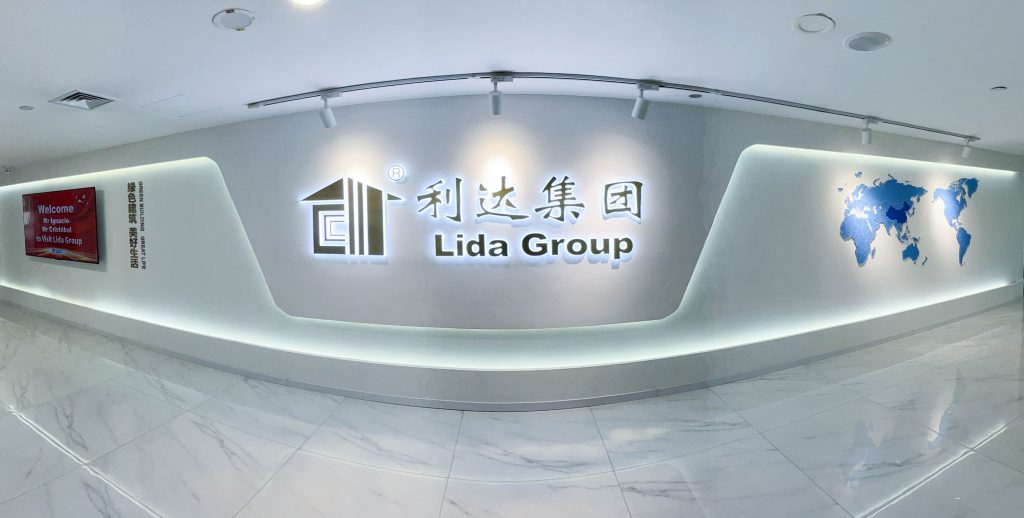
Related news
-
Film Industry Shift: Major Studios Adopt Lida Group's Temporary Container Buildings for Mobile High-Quality Production Villages
2025-07-30 14:11:48
-
Arctic Research Breakthrough: Lida Group's Insulated High Quality Container Houses Utilize Specialized Prefab Construction Techniques
2025-07-30 11:59:24
-
Sustainable Urban Expansion: Lida Group Delivers High Quality Container Apartments Using Recycled Prefab Construction Materials
2025-07-30 11:15:35
contact us
- Tel: +86-532-88966982
- Whatsapp: +86-13793209022
- E-mail: sales@lidajituan.com


